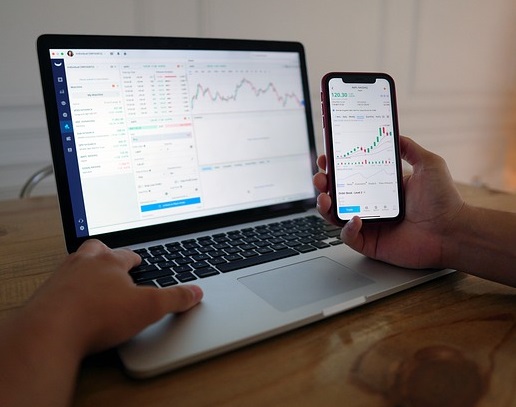10 Simple Ways to Improve your Financial Literacy Skills
April is the month of financial literacy awareness. Many people, especially in the United States, are not the best when it comes to financial literacy skills. To ensure successful handling and growing of your money, have a look at these simple tips.
Reading time: 6 mins | Published on: 4/12/2022

1. Budgeting
A task as easy as budgeting can keep your expenses in check. Say you are a single person living on your own who wants to spend around $500 or less each month. This is easily attainable if you can keep track of your expenses. You can allocate different amounts of money to specific costs. Plus, you could have an amount set aside for emergencies each month, so you know that you have it ready if you need extra cash for an unexpected expense. There are tons of resources you can use for this process. You could track them on a spreadsheet or use an app. Budgeting is one of the simplest tricks to keep yourself from overindulging.
2. Sign Up for Financial Newsletters
If you do not know where to start on this journey toward gaining financial literacy skills, signing up for financial newsletters is a good start. Research and reading are great ways to increase your awareness of good and bad spending habits. It can inform you more about how to save money, deal with your credit score, and much more.
3. Invest in a Retirement PLan

At an early age, one needs to start investing in a retirement plan. Some of the available plans are 401(k), 403(b), traditional IRA, Roth IRA, etc. This is the money you will save and, hopefully, grow to have available after your retirement. Instead of putting minimal funding into this account, it is vital to start this investing as soon as possible. This will allow you to be financially stable once you leave work and start a new journey in your life. Even if you only put around 10% aside from your paycheck each month, this will still add up to amazing savings. Don’t neglect your retirement plan. Research and choose one that benefits you because this will help you be set up for success later on in life.
4. Learn from Social Media
As we know, social media can contain fake news. One must be careful with who they trust and what they see online. However, there are many people on different social channels that want to help others become financially literate. LinkedIn, Twitter, and Facebook are good places to find information about financial literacy skills and what you can do to improve them. Just make sure you follow trusted and honest sources of information.
5. Check your Credit Score
Your credit score is fundamental. If you ever want to take out a loan to buy a house, car, or finance your business, then you need to have a healthy credit score. This can be attained by paying off your credit card bills and interest on time, new missing payments, etc. If your credit score is low, this can negatively impact you in many ways. It is much harder and much more expensive to get credit from banks and other institutions with a low credit score. Improving or maintaining a high credit score is vital.
6. Financial Management Tools
As mentioned before, budgeting apps can help you keep track of your finances. However, this is not the only financial management tool available at your disposal. Some apps can track the progress of your loan and when payments are due, your 401(k) investments, your net worth, and so much more. These apps can help you become organized by tracking your finances, leading to financial stability. If you want to check out some apps, Personal Capital’s Retirement Planner is great for 401(k) tracking, Mint is good for budgeting and keeping track of savings.
7. Talk to a Professional
If self-teaching isn’t working, you could always speak to a professional. Don’t be afraid to ask for help! There are tons of people who do financial planning in their lives or for a job and would help you out if you were to ask. If you cannot afford to hire someone to do this, then try to network with someone in the field and see if they can give you some tips. Additionally, there are hundreds of meetups, webinars, and professional presentations, where you can ask questions at the end. Reaching out does not hurt and will most likely help you in the long run.
8. Understand Basics of Debt and Loans
Loans and debts hold a lot of power in the financial world. When taking out a loan, knowing everything about interest rates, repayment schedule, penalties for late or pre-payments is essential. Ask about all those properties before taking a loan to ensure you won’t harm your credit score. If you are already in debt, you have to try to pay it off as soon as possible. If you get behind on your payment schedule, you could have to pay more for your loans, sending you into additional debt. Understanding these basic concepts should enable you to make the right decision should you choose to go down this path.
9. Safe Spending with Credit Cards
Credit cards are great because of the bonuses you can get and the simplicity of use. However, this can be dangerous for people who cannot control their spending. Credit cards have limits, and surpassing them could get you into trouble. You have to be able to pay off a portion of your bill each month, and if you can’t, this can send you into debt or cause legal troubles for you. Yes, it is fun to swipe that card and get tons of different items, but not at the expense of your financial stability. Use your credit cards wisely.
10. Gain control
All in all, you have to be in control of your finances. If you don’t invest and budget, you will not have money saved for later. Ignoring free financial resources will prevent you from learning and improving your financial situation. Instead of allowing yourself to overspend and go into debt, it is necessary to see your flaws and try to manage them. Additionally, gaining control over your financial present and future will help you overcome any negatives you may face or faced in the past.
These are just some of the tips and tricks to increase your financial literacy skills. Knowing what can help you and what hinders you is a big step in this process. Be sure to be safe with your money and do not overindulge.











